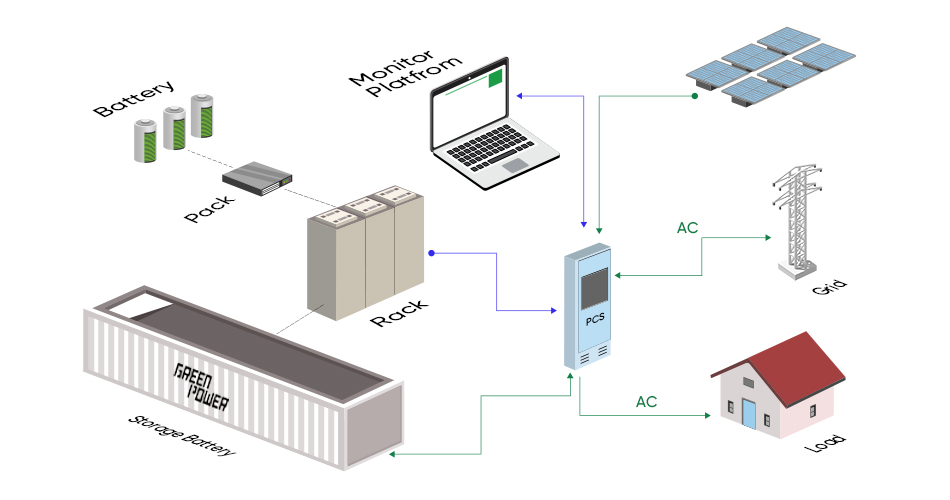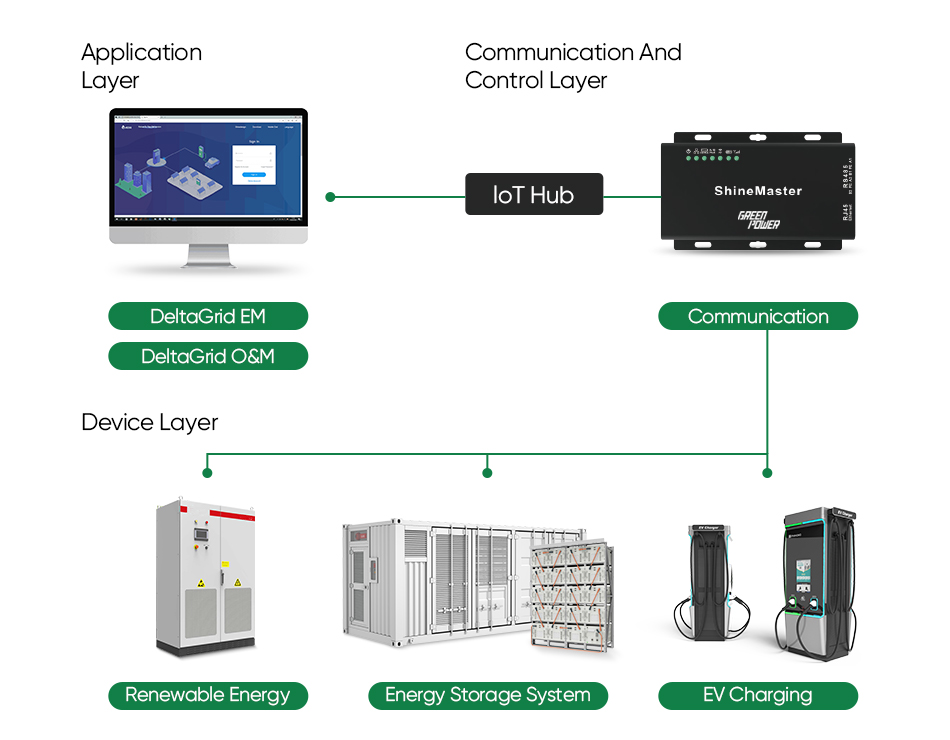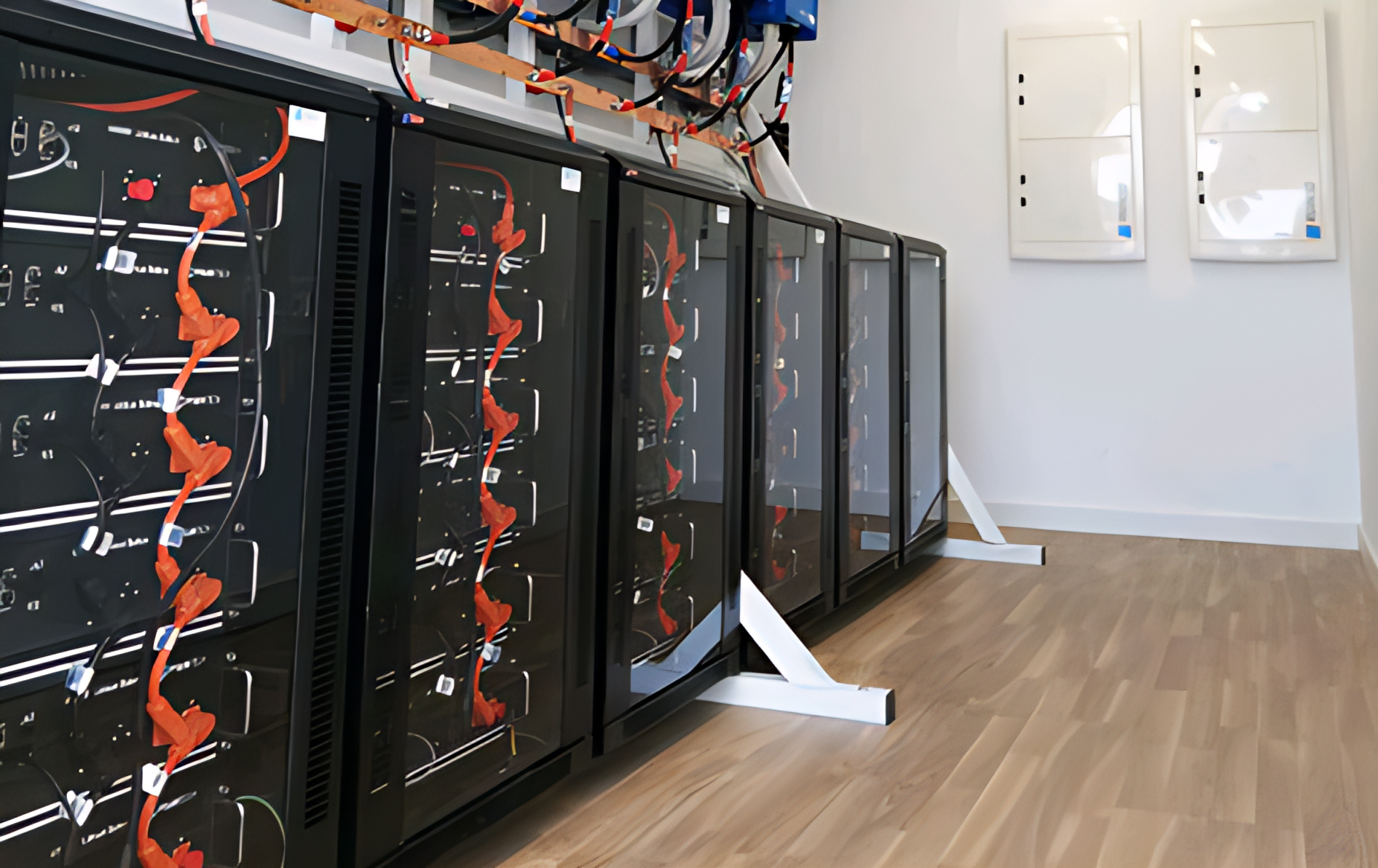Short-term Leaders and Driving Forces Currently, the key driving forces behind the development of Solar Energy Storage and Charging Integrated Stations (SESCIS) projects are enterprises benefiting from government funding support, with policy support being their core driving factor. In this regard, the Chinese government has played a crucial role in the field of sustainable energy, especially with the joint release of the "Notice on Organizing Pilot Projects for Comprehensive Electrification of Public Vehicles in Priority Areas" by eight ministries, including the Ministry of Industry and Information Technology, in February 2023. This notice clearly defines the task of accelerating the pilot application of "Solar Energy Storage and Charging Integration."
Global Demonstration Cases The success of SESCIS is not limited to China; it is widely adopted globally. Here are some global application case demonstrations:
- United States: Hawaii Hawaii is known for its abundant natural energy resources. SESCIS are widely used there, utilizing the plentiful sunlight and wind resources. These stations provide around-the-clock power to residents through storage systems, reduce the grid load, and help reduce reliance on traditional energy sources.
- Europe: Netherlands The Netherlands is one of the leading countries in renewable energy adoption in Europe, and SESCIS are gaining significant attention. These stations not only provide a sustainable solution for the Netherlands' power needs but also export clean energy to neighboring countries, making the Netherlands a major electricity exporter in Europe.
Long-term Leaders and Driving Forces Looking into the long term, the leadership of Solar Energy Storage and Charging Integrated Stations projects will gradually shift from government-led initiatives to enterprises such as grid operators, car manufacturers, and charging station providers. Market-driven forces will increasingly replace policy guidance, driving sustainable growth in this sector.
From a demand perspective, by the end of 2022, the number of new energy vehicles in China reached 13.1 million. According to predictions from the China Association of Automobile Manufacturers, sales of new energy vehicles are expected to reach 9 million by 2023. This rapid growth brings significant demand for charging infrastructure. However, the current ratio of charging stations to vehicles in China is 2.5:1, and the ratio of new energy vehicles to public charging stations is approximately 7.1:1. This falls short of the government's target of 2:1 by 2025 and the ideal 1:1 ratio in the longer term, indicating ample market opportunities in the future.
At present, the profit model for SESCIS is relatively simple, primarily relying on charging service fees, with diversified profit models such as peak-valley electricity price arbitrage not fully realized. Based on electricity price data, the difference between peak and valley electricity prices ranges from 0.4 to 0.9 RMB per kilowatt-hour nationally, and it can exceed 0.8 RMB per kilowatt-hour in the provinces of Jiangsu and Guangdong, which have the highest electricity consumption. There is significant potential for using energy storage systems for peak-valley electricity price arbitrage. Additionally, solar power generation can generate additional income through green energy trading and government subsidies. As key components of integrated stations, such as photovoltaic, energy storage batteries, and charging stations, mature and achieve economies of scale, costs will decrease. In the long term, Solar Energy Storage and Charging Integrated Stations will have substantial profit potential, and market-oriented operations will become a trend.
Cost and Profitability Analysis of Solar Energy Storage and Charging Integrated Stations Composition and Cost Estimation of Solar Energy Storage and Charging Integrated Stations Solar Energy Storage and Charging Integrated Stations comprise four main systems: the traditional power grid system, photovoltaic system, energy storage system, and charging system. The main hardware includes transformers, photovoltaic inverters, photovoltaic modules, energy storage inverters, energy storage batteries, charging stations, and other auxiliary equipment, while the software system mainly covers Energy Management System (EMS).
Taking the Shenzhen Gongming South "Solar Energy Storage and Charging" Integrated Station as an example, which includes a 450 kWp photovoltaic capacity, a 500 kWh energy storage system, and 128 DC charging stations with a total power of 8160 kW, the one-time cost is approximately 9.4 million RMB. Additionally, land costs need to be considered based on the city's specific conditions, and the annual operating and labor costs are approximately 1.0388 million RMB.
Profitability Analysis of Solar Energy Storage and Charging Integrated Stations The profitability of Solar Energy Storage and Charging Integrated Stations can be divided into economic and social benefits. From an economic perspective, photovoltaic power generation can follow the "self-use with surplus power grid" model, providing both self-use and surplus power grid income, along with national and local green energy subsidies. Furthermore, photovoltaic power generation helps reduce carbon emissions and can generate carbon trading income. Energy storage systems can store electricity and provide power through peak-valley electricity price arbitrage, and the charging system can collect charging service fees. Additionally, supplementary projects like battery testing can provide extra income. Considering these factors, the daily earnings of Solar Energy Storage and Charging Integrated Stations can reach 12,500 RMB, and after deducting labor costs, the daily profit can be approximately 12,300 RMB.
From a social benefits perspective, Solar Energy Storage and Charging Integrated Stations can serve as new infrastructure projects, promoting economic recovery. Additionally, they integrate photovoltaic power generation, energy storage, and electric vehicle charging facilities in one place, saving land resources and facilitating resource-efficient utilization. These stations can increase the proportion of green energy, reduce traditional energy usage, decrease carbon emissions, and contribute to national carbon reduction goals. Moreover, energy storage systems can address the integration challenges of photovoltaic power generation, improve energy utilization efficiency, and provide grid support. Therefore, Solar Energy Storage and Charging Integrated Stations offer broad social benefits.
Stakeholder Benefit Analysis Benefit Analysis for Automakers
- Addressing Charging Challenges: Solar Energy Storage and Charging Integrated Stations are expected to address the charging challenges faced by new energy vehicle users, including insufficient charging stations, difficulty finding locations, and a lack of charging infrastructure. This will help promote the widespread adoption of new energy vehicles.
- Battery Testing Services: These stations provide battery testing services for new energy vehicle owners, addressing concerns about the health of their batteries and enhancing user confidence.
- Recommendation for Automakers: Automakers should actively participate in the construction and operation of Solar Energy Storage and Charging Integrated Stations, either through investment or cooperation with grid companies. They should also focus on the development of Vehicle-to-Grid (V2G) and long-life battery technologies to leverage the advantages of distributed energy storage from electric vehicles, provide grid support, and promote the integration of new energy sources.
Benefit Analysis for Charging Station Operators Charging station operators can benefit from Solar Energy Storage and Charging Integrated Stations in several ways:
- Policy Incentives: National-level incentives encourage the demonstration and promotion of Solar Energy Storage and Charging Integrated Stations, which can help alleviate challenges related to land acquisition.
- Solution to Capacity Limitations: The energy storage systems of these stations can address capacity limitations of transformers, helping overcome constraints in charging station construction.
- Improved Stability: The control system (EMS) of Solar Energy Storage and Charging Integrated Stations enhances the stability of charging station operations.
- Interconnectivity and Standardization: Integrated construction and operation improve the interconnectivity of charging stations, enhancing user convenience and unifying technical standards for improved operational efficiency.
- Economic Benefits: Charging station operators can benefit from direct trading income and green energy subsidies by utilizing photovoltaic power generation.
Recommendations for Charging Station Operators:
Focus on research and development, especially in the development of fast charging technology, to reduce charging time and improve charging station efficiency.
- Consider investment and cooperation to participate in charging station construction and operation, which can help mitigate financial pressure and risks and address land resource issues.
- Establish interconnectivity between charging stations to enhance user experience, create a comprehensive charging station network, and improve operational efficiency.
If you're interested in learning more about our solar energy storage offerings, we encourage you to explore our product line. We offer a range of panels and battery that are designed for various applications and budgets, so you're sure to find the right solution for your needs.
Email: Info@fgreenpv.com
WhatsApp: +86 17311228539
#GreenPower #EnergySolutions #CIESS #SustainableEnergy #FactoryDirect #RenewableEnergy #OffGridSolar #Sustainability #CleanEnergy #SolarPower #EnergyIndependence #Innovation
Post time: Oct-22-2023














